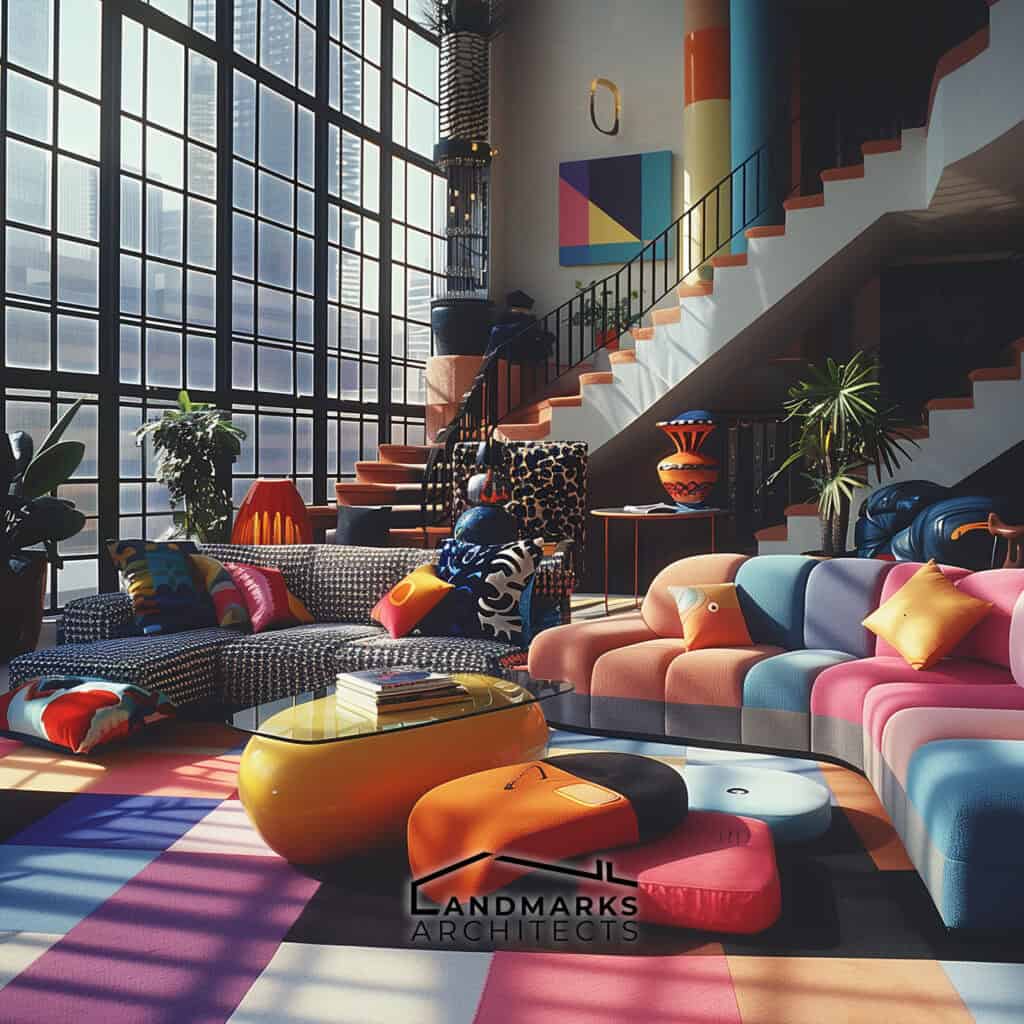
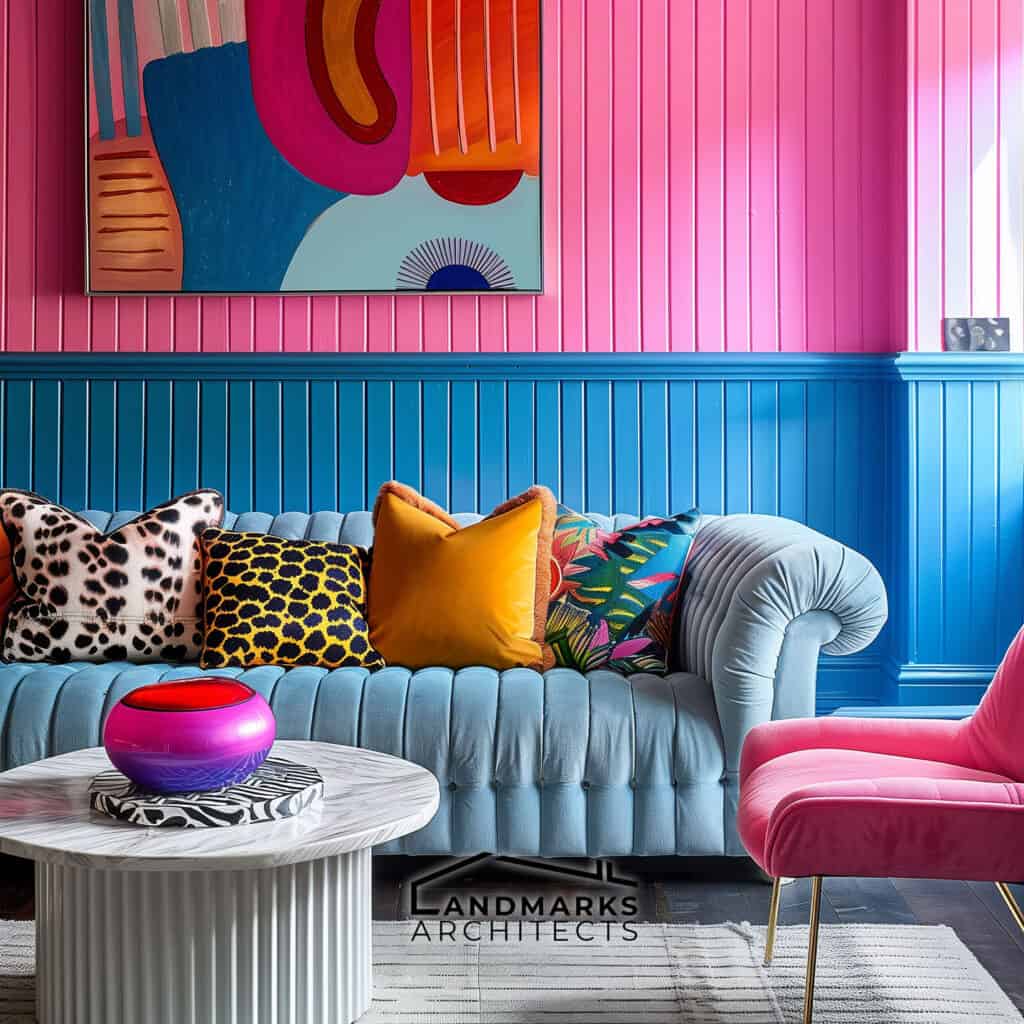
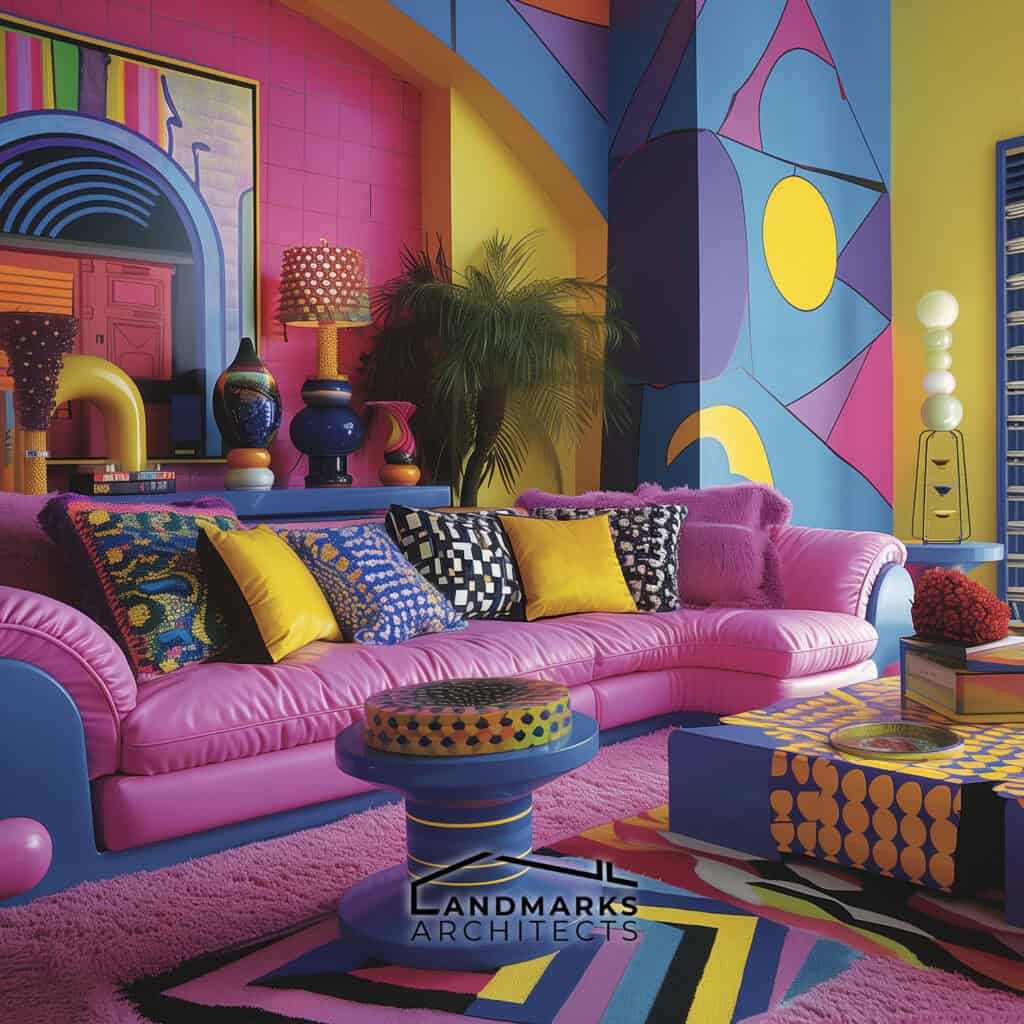
Do you want to bring the fun and energy of the 1980s into your home? This decade is famous for its bold colors, unique patterns, and playful designs. It offers a way to create spaces that are lively and personal.
As a homeowner, you deserve an exciting space that reflects your style. At Landmarks Architects, we focus on mixing retro vibes with modern touches. We can help you use bold colors, animal prints, and curved furniture to make your home stand out.
In this article, we will cover:
- The impact of bold colors and bright accents
- The charm of animal prints
- The appeal of curved furniture
- The beauty of fluted surfaces
- The balance of minimalism and maximalism
- The return of retro furniture
- The influence of nostalgia and pop culture
- The use of bold accessories
Ready to design a space that celebrates the fun of the 1980s? Keep reading to learn how to create a bright and welcoming home that shows off your personality.
- 1. Bold Colors and Bright Accents
- 2. Animal Prints and Patterns
- 3. Circular Forms and Curved Furniture
- 4. Fluted Surfaces and Texture Play
- 5. Minimalism and Clean Lines
- 6. Retro Furniture and Iconic Pieces
- 7. Nostalgia and Pop Culture-Inspired Decor
- 8. Bold Accessories and Decor Elements
- Designing a 1980s-Inspired Space Today
- 1980s Interior Design: A Recap
- FAQ
1. Bold Colors and Bright Accents
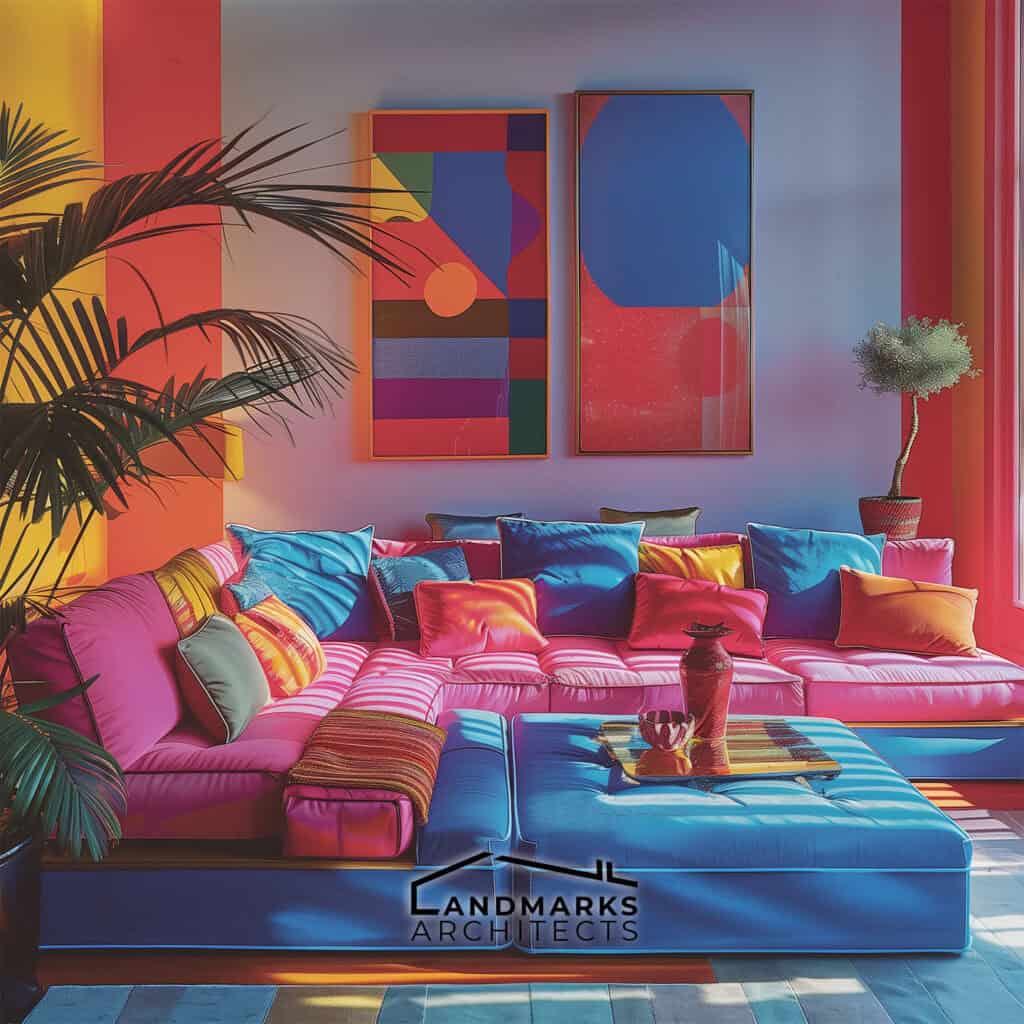
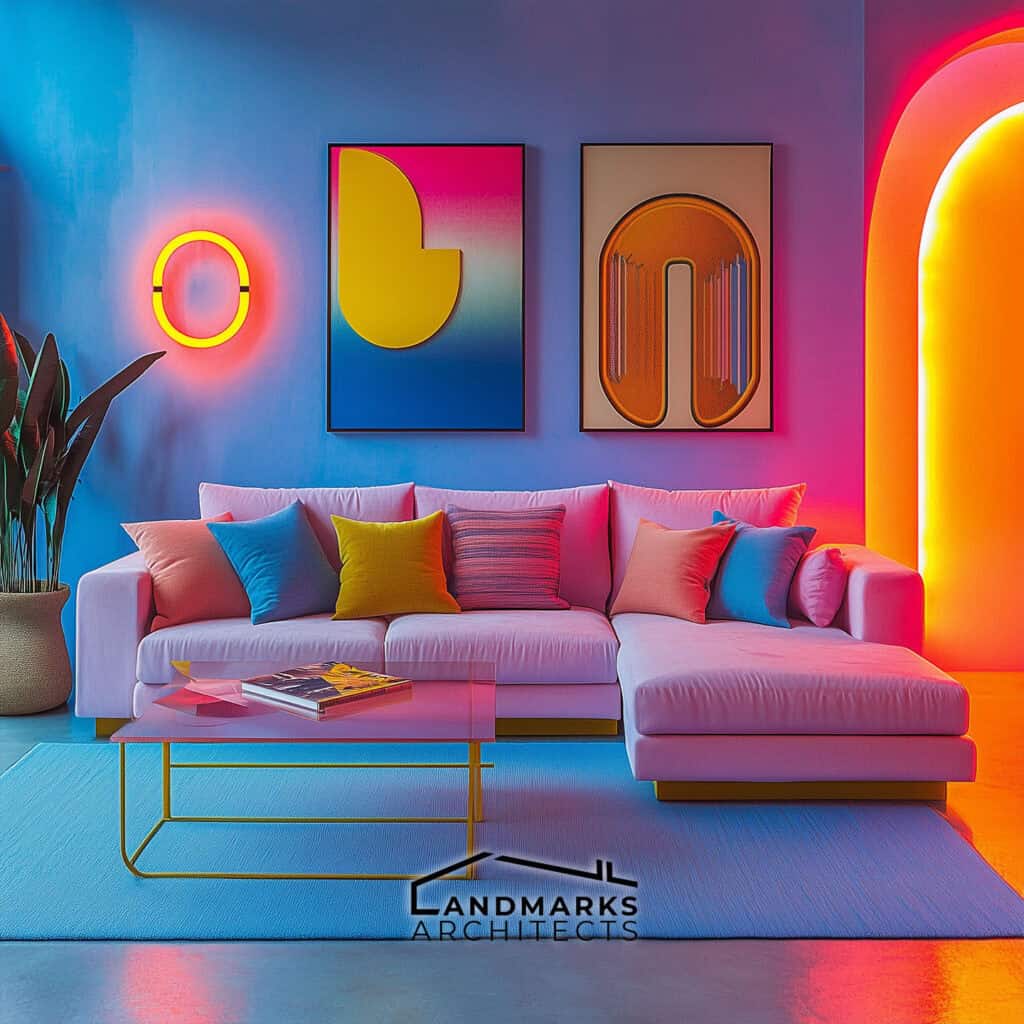
The 1980s celebrated bold colors and bright accents that transformed interiors. Designers painted walls in neon pink and electric blue. It created a lively atmosphere.
Accessories, like vibrant cushions and art, enhanced these themes. They added life to the spaces. Mixing warm and cool colors created contrast, highlighting furniture and adding depth.
The 1980s used vibrant colors in interiors. They were memorable and lively. Today, they still influence modern design trends.
See Also 1970s Style in House Architecture: 10 Must-Know Essential Features
2. Animal Prints and Patterns
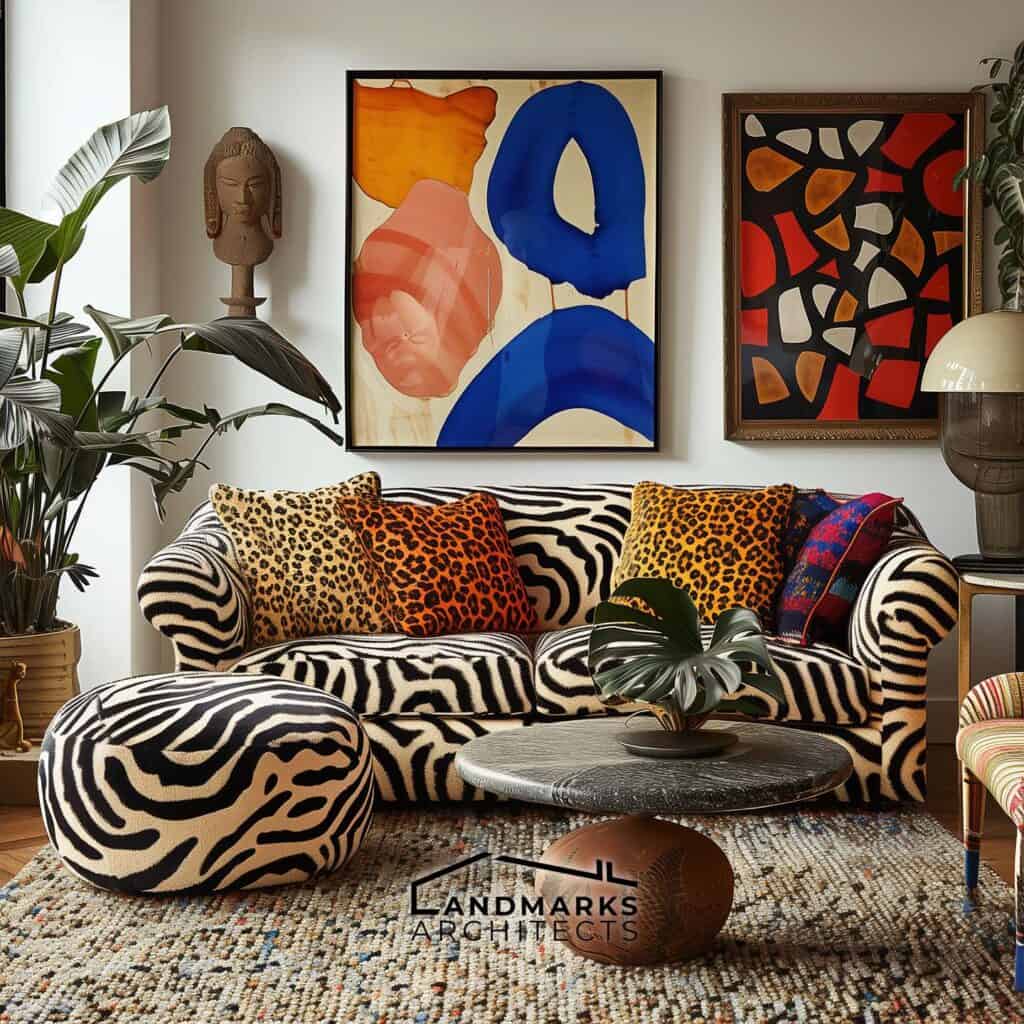
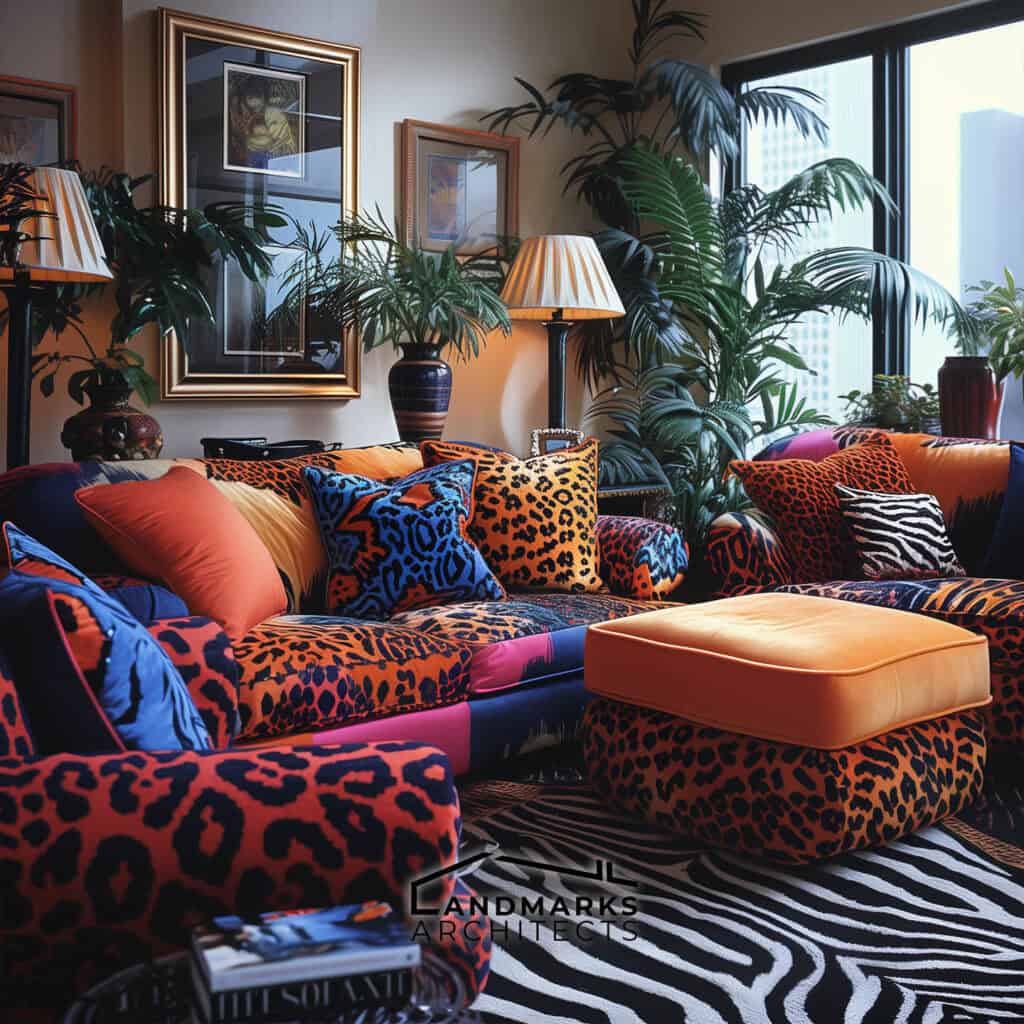
Animal prints were a defining feature of 1980s interior design. Designers used bold patterns like leopard, zebra, and snakeskin to create vibrant spaces. In modern decor, you can easily incorporate animal prints using fabrics and accessories.
Throw pillows, area rugs, and accent chairs in these prints can energize any room. Mixing these bold prints with solid colors helps balance their intensity.
When choosing designs, consider the space. Use large prints in big areas. Small prints suit cozy spots. They add interest without overwhelming. Layering patterns is another exciting trend. Pair different animal prints with complementary textures to create depth. This style reflects the eclectic charm that defined the retro decade.
3. Circular Forms and Curved Furniture
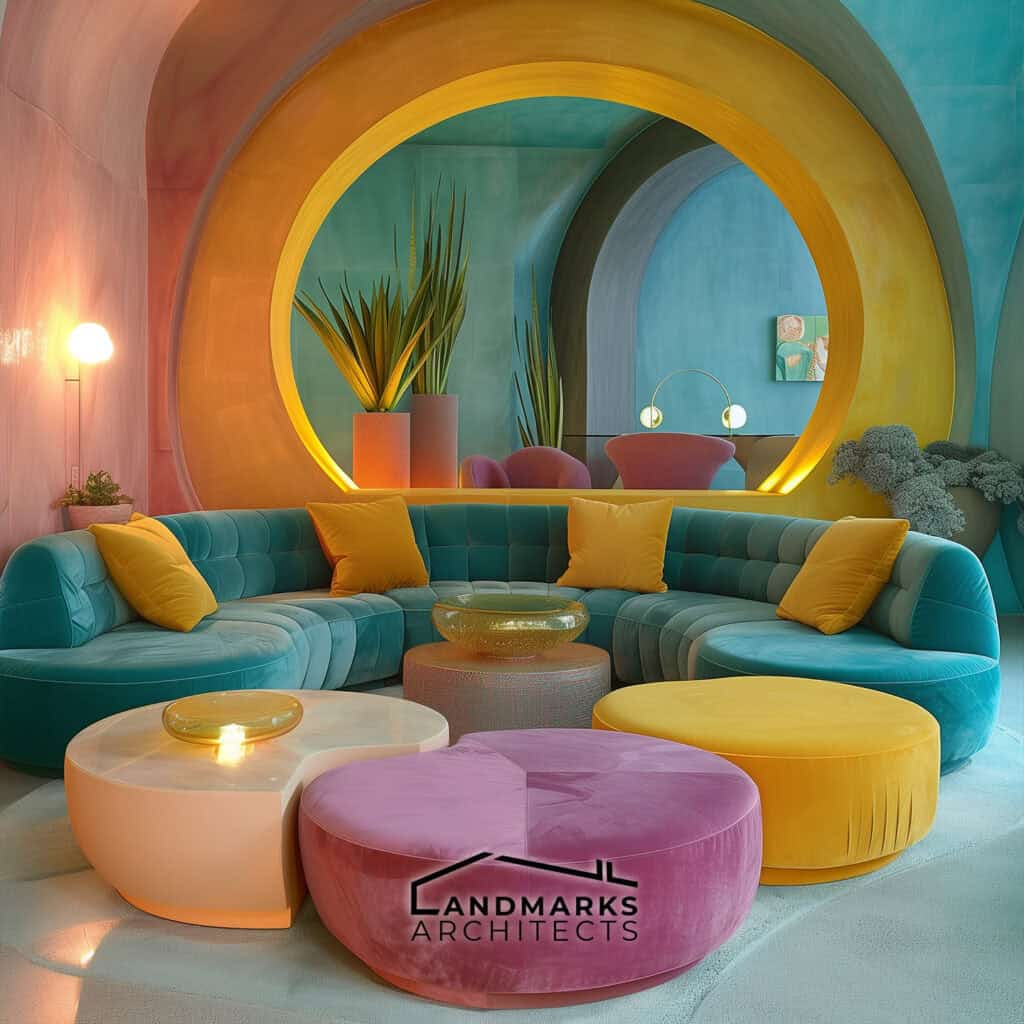
Circular forms and curved furniture were key elements of 1980s interior design. They added charm and enhanced both comfort and style.
Key Features:
- Soft Lines: Curved furniture had soft lines that softened hard edges. It created a welcoming atmosphere.
- Versatile Surfaces: Circular tables and rounded sofas are adaptable. They fit easily into any layout.
- Vibrant Colors: Many pieces had bright colors. They reflected the decade’s energy.
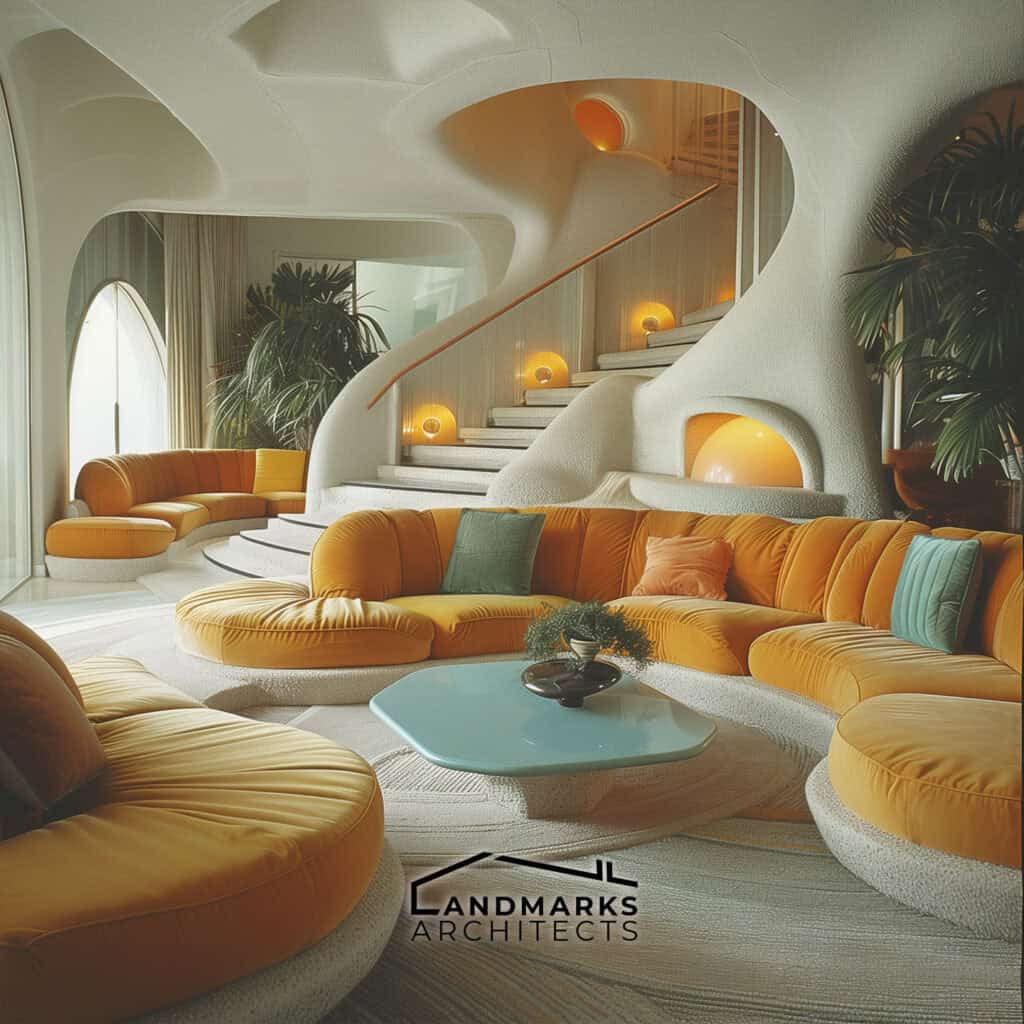
Interior designers embraced these trends. They chose furniture that was both functional and beautiful. The beauty of these designs lies in their ability to create harmonious spaces. Curved furniture often encouraged conversation, making living areas feel connected and inviting.
This focus on comfort and style truly defined the charm of 1980s interior design.
4. Fluted Surfaces and Texture Play
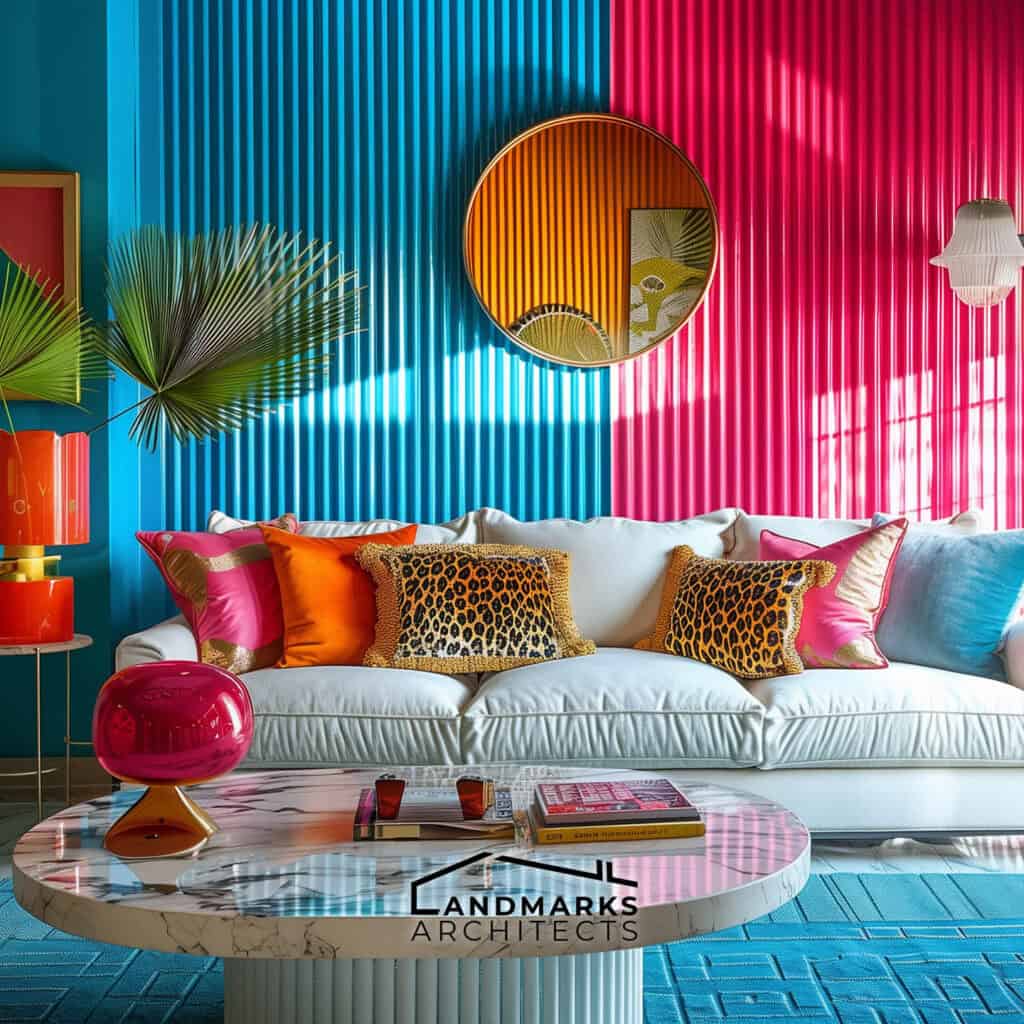
Fluted surfaces became a key feature of 1980s interior design. Designers embraced their ability to add depth and interest to spaces. These surfaces often used materials like marble and glass, drawing inspiration from nature.
Key Characteristics:
- Light Play: The grooves of fluted surfaces catch light. They create vibrant shadows that enhance simple designs.
- Texture Layering: Layering textures broke up flat areas and added interest.

In kitchens and living rooms, fluted details appeared on cabinets and walls. They contributed to a modern look while maintaining the elegance of clean lines. Interior designers recognized how these textures could transform spaces.
Fluted elements provided subtle contrast against smooth surfaces, enriching the style. Today, this trend continues to inspire new generations in interior design.
See Also What is the Art Deco Style in Architecture? 3 Signature Elements to Know
5. Minimalism and Clean Lines
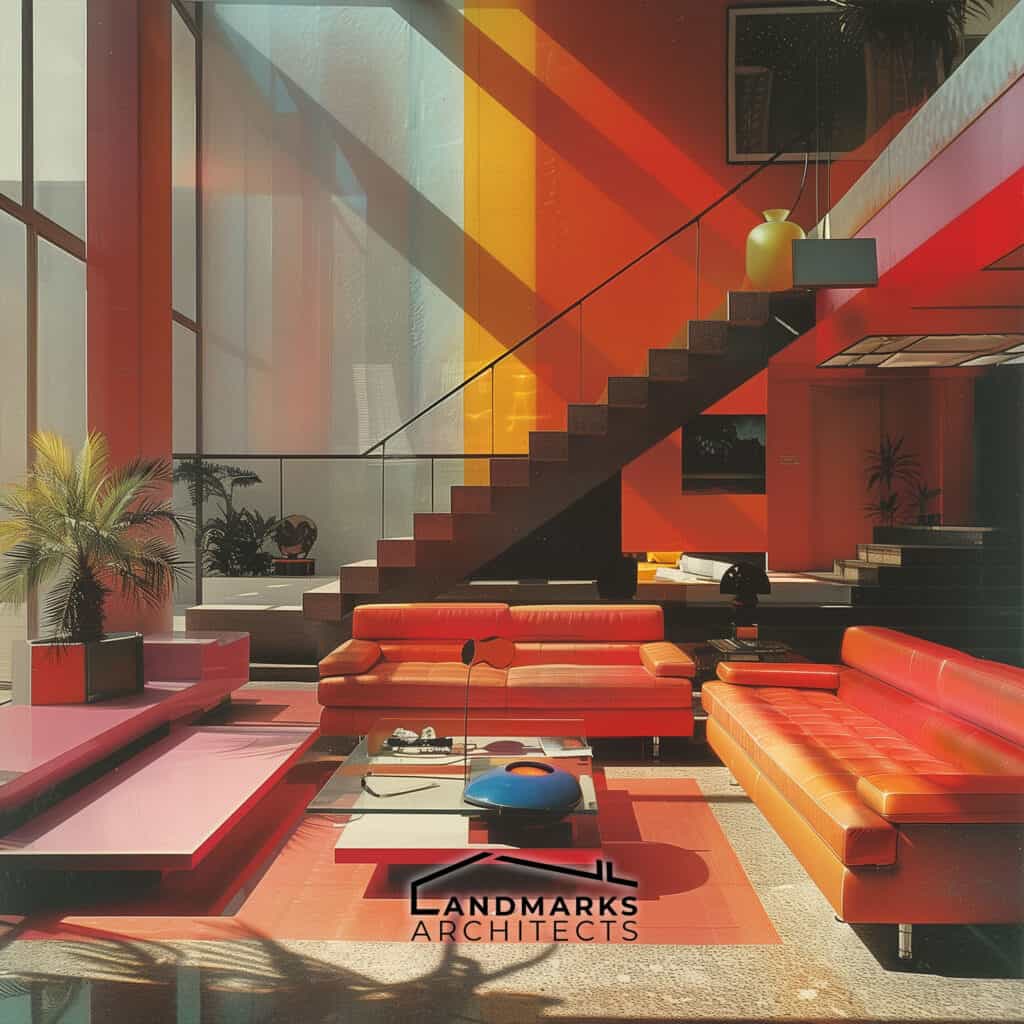
In the 1980s, minimalism became a defining trend in interior design. This style emphasized simplicity and functionality, focusing on clean lines and uncluttered spaces.
Key Features:
- Ultra-Clean Lines: Designers favored smooth, polished surfaces. They often used glass and metal to create an open, airy feel.
- Color Balance: Minimalism was balanced with vibrant, bold color palettes. Their simple forms created a striking contrast.

These designs felt sophisticated and inviting. The use of negative space allowed bold elements to stand out, creating a harmonious blend of calm and energy. Minimalism in the 1980s reflected a desire for order among the complexity of life.
6. Retro Furniture and Iconic Pieces
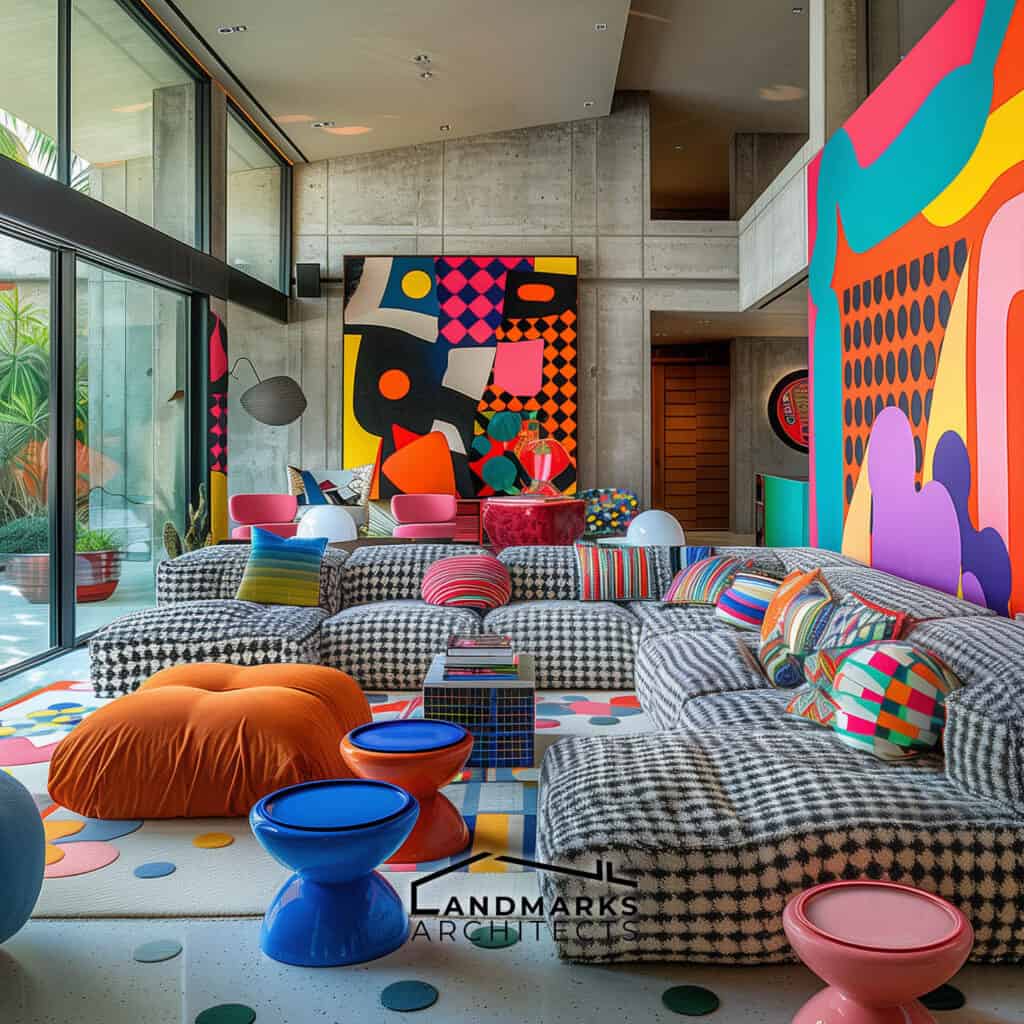
The 1980s brought a vibrant shift in interior design, known for its bold colors and unique styles. Today, retro furniture from this era is making a comeback, offering a nostalgic yet modern look.
Key Pieces:
- Oversized Sofas: Comfortable and stylish, these are perfect for any living space.
- Geometric Coffee Tables: Add a playful touch to interiors.
- Colorful Accent Chairs: Serve as functional conversation starters.
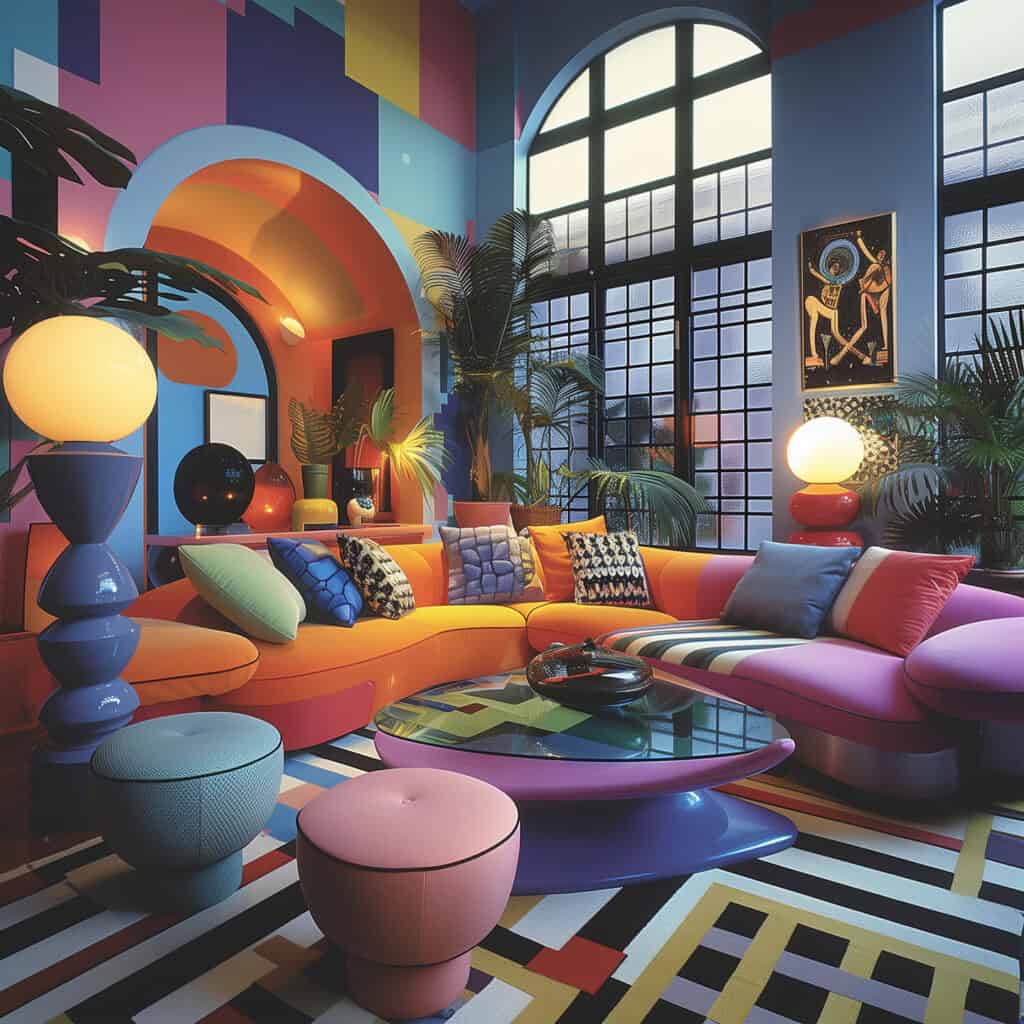
Designers often highlight Memphis Group furniture for its funky patterns and playful shapes. Iconic items like the Womb Chair and Bubble Chair showcase the innovative trends of the time.
Using these elements in modern interiors creates a time capsule feel. It blends past charm with a contemporary style. Retro furniture captures the 1980s. It appeals to both designers and homeowners.
7. Nostalgia and Pop Culture-Inspired Decor
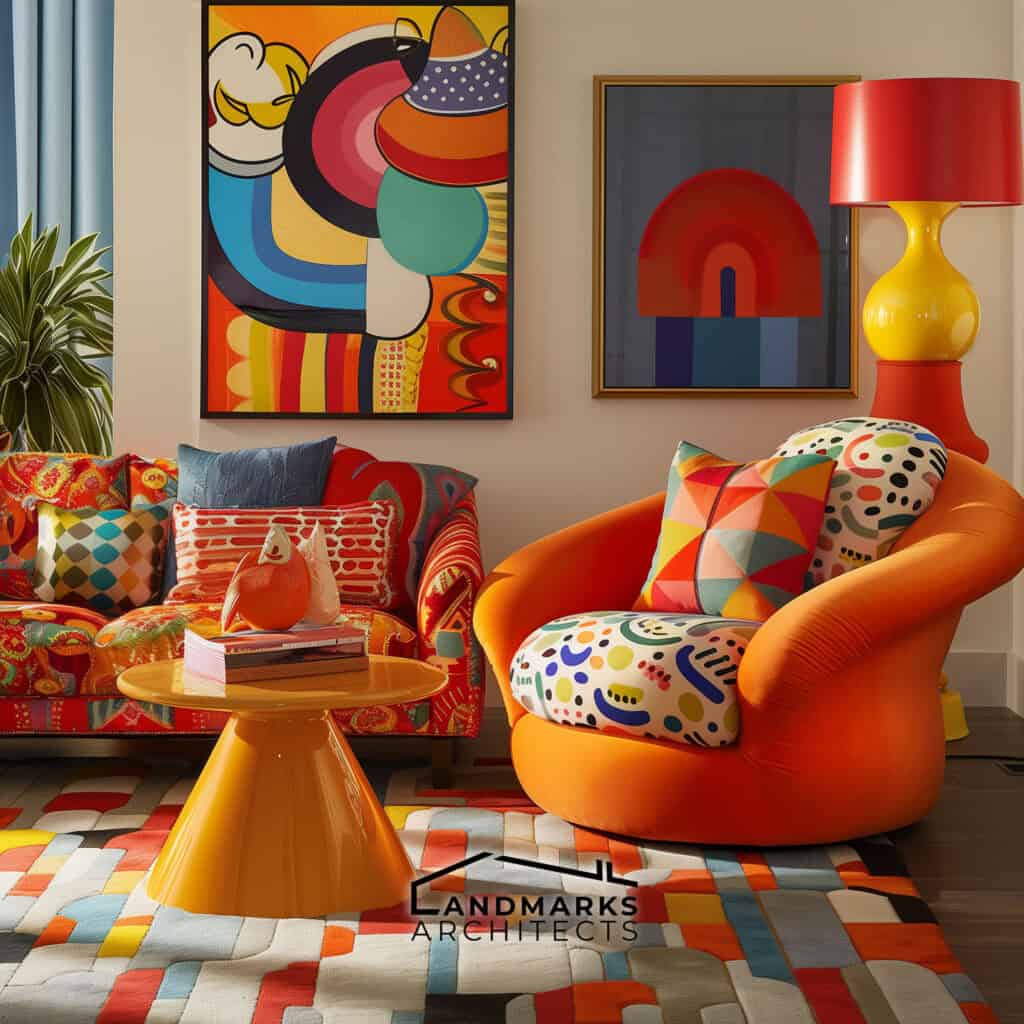
The 1980s was a vibrant era shaped by pop culture. Icons from movies, music, and fashion influenced interior design trends.
Bright colors and bold patterns captured the excitement of the decade.
Interior designers drew inspiration from popular culture. Graphic T-shirts reflected the playful spirit of home decor. Nostalgia played a significant role, as many fondly recalled the styles of their youth.
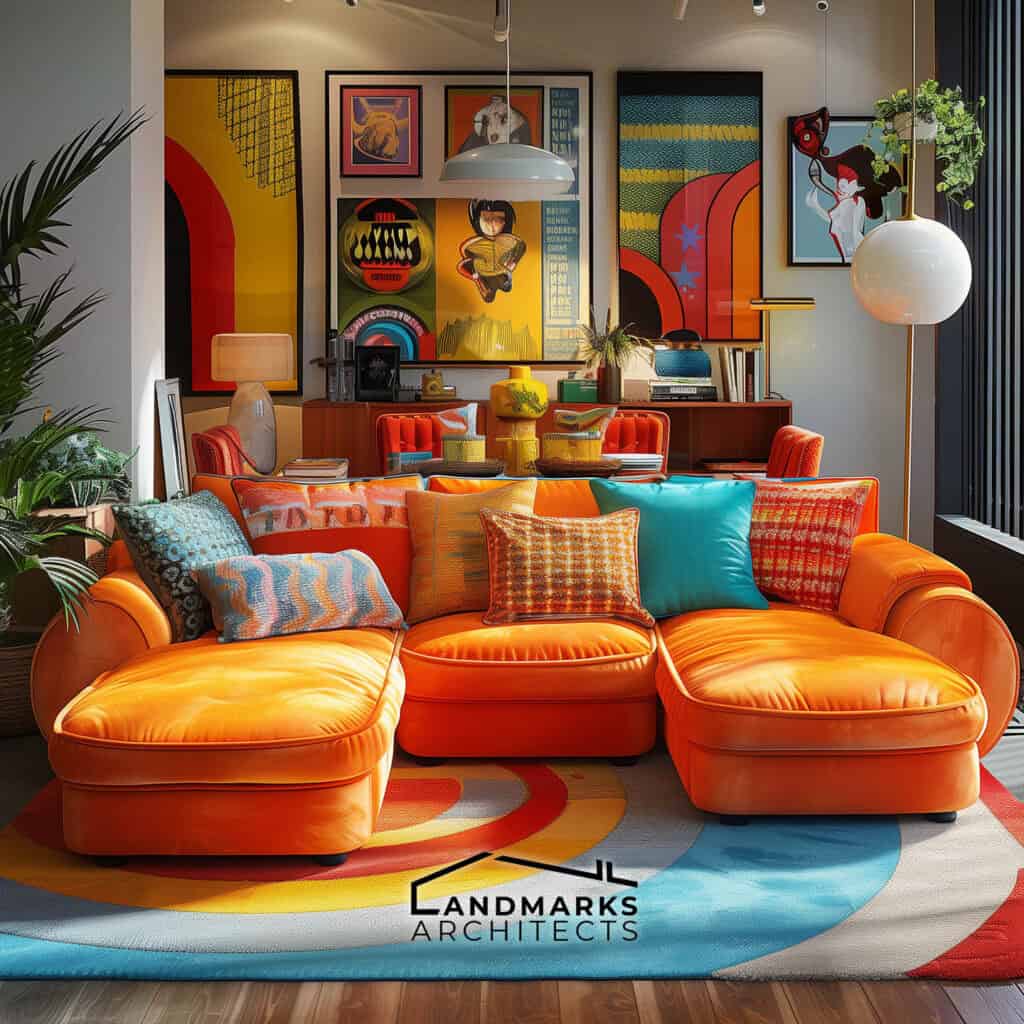
Experts highlight the importance of these influences. Mixing traditional elements, like York-inspired decor, with modern styles enriches designs. It honors the past.
Art and decor from the ’80s remain popular today. They add warmth and familiarity to spaces. Vintage pieces can complement modern furniture, creating a unique aesthetic. Thus, nostalgia and pop culture continue to shape interior design in various ways.
8. Bold Accessories and Decor Elements


Bold accessories defined 1980s interiors. They were key to creating vibrant and lively spaces.
- Curtains were often oversized with striking patterns. Bright colors like neon pink and green added energy to rooms.
- Wall decorations featured large art pieces and mirrors. Popular geometric shapes and bold motifs added depth and interest.
- Accessories like pillows and throws in vivid shades made spaces feel cozy and dynamic. They acted as focal points that drew the eye.
- Furniture ornamentation included shiny metals and unique designs. These elements reflected the bold spirit of the decade.
These accessories turned ordinary spaces into exciting ones. They showed the lively essence of 1980s interior design.
Designing a 1980s-Inspired Space Today
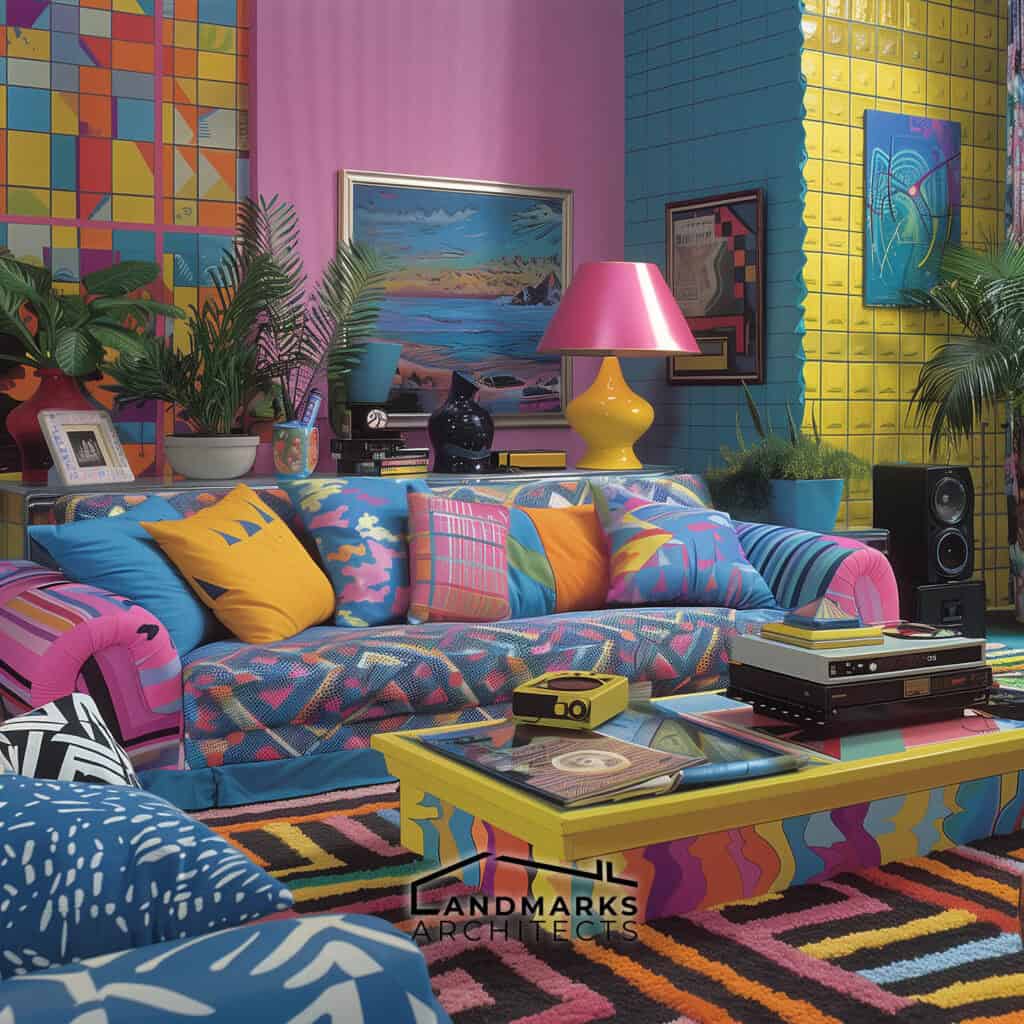
To create a 1980s-inspired space, start with bold colors and patterns. Vibrant hues like neon pink, electric blue, and bright yellow are essential. Mixing these colors with metallic accents adds a striking effect.
Key Design Elements:
- Furniture: Choose oversized and comfy pieces with geometric shapes and unique designs.
- Patterns: Use geometric patterns in fabrics and wallpaper to capture the era’s vibe.
You can enhance a modern home by incorporating popular 1980s design trends. Blend retro elements with contemporary styles. For example, pair a classic 80s sofa with a sleek, modern coffee table for contrast.
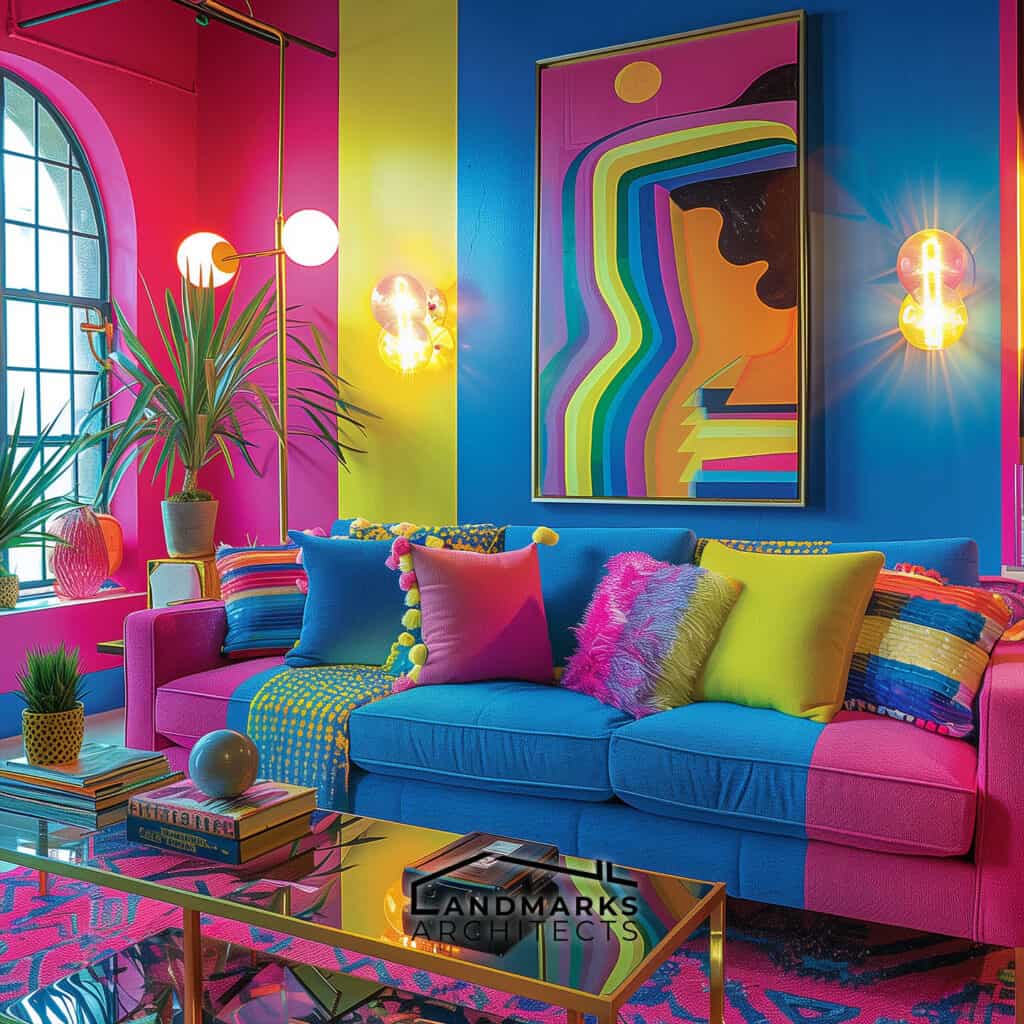
Tips from Style Experts:
- Lighting: Opt for bold light fixtures, such as large chandeliers or funky lamps.
- Art: Display neon artwork or iconic pieces from the 80s.
- Accessories: Add nostalgic items like cassette tapes or vintage vinyl records.
Designing a space inspired by the 1980s allows for creativity and personal expression. By embracing these trends, you can create a unique and lively atmosphere.
See Also Industrial Interior Design: 9 Essential Features for a Raw, Authentic Look
1980s Interior Design: A Recap
To enjoy 1980s interior design, use bold colors, fun patterns, and unique furniture. Use bright colors like neon pink and electric blue. They create lively spaces that reflect your style. Incorporate eye-catching accessories and retro pieces to enhance the vibe.
By mixing these elements with modern touches, you create a nostalgic yet fresh look. It brings the energetic spirit of the ’80s into your home.









